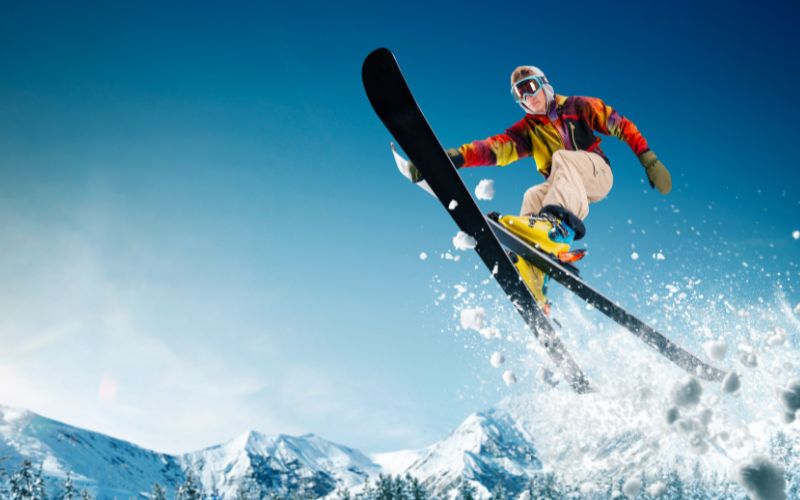For those who love skiing, the sport is a thrilling way to spend a winter day.
Sliding down a mountainside on skis, with the crisp air whipping around you, is an exhilarating experience.
But what many people don’t realize is that skiing is also a very physically demanding activity.
Skiing can be a physical activity, but it depends on how you ski. If you are skiing with the proper techniques, you will not get as tired as quickly. However, if you do not have the proper technique, skiing can wear you out both mentally and physically. It’s important to realise that skiing will provide you with a full body workout.
Table of Contents
The physical demands of skiing
Skiing requires a great deal of coordination. You have to be able to coordinate your arms and legs in order to maintain balance while you are skiing.
This is not an easy task, especially if you are skiing at high speeds.
In addition to coordination, skiing also requires a great deal of balance.
You have to be able to keep your balance while you are skiing on uneven terrain.
This can be quite difficult, especially if you are not used to it.
Last but not least, skiing requires a great deal of strength.
You have to be able to hold yourself up with your legs while you are skiing down the hill. This can be very tiring, especially if you are not used to it.
How to deal with the demands of skiing
Skiing is a strenuous activity that can put a lot of strain on your body.
It’s important to be in good physical shape before you hit the slopes, or you risk injuring yourself.
Here are some tips for dealing with the physical demands of skiing:
Consider your activity level
The first thing you need to do is consider your activity level.
If you are someone who generally lives a sedentary lifestyle, chances are that even the easiest of ski runs is going to be tough on your body.
On the other hand, if you live an active lifestyle and typically stay in shape, skiing may not be as physically demanding as it would be for someone else.
Of course, even the fittest person is going to get tired after carving up the slopes all day long
Build up your stamina gradually
Work on your fitness, starting a few weeks before you set off on your trip.
Aerobic exercise such as running, swimming and cycling will improve your overall fitness levels and will help you to lose a few pounds too.
Squats and work with weights will also help to improve the strength of your legs, particularly your knees and thighs which can take a beating on the ski slopes.
Also, when you arrive at the ski resort don’t try to ski all day every day.
Ease yourself in gently, and take a few days to build up your stamina.
Warm up before you ski
Before you strap on your skis and hit the slopes, it’s important to warm up your muscles.
A good warm-up will help prevent injuries and make skiing less physically demanding on your body.
Try doing some light exercises, such as jogging in place or jumping jacks, before you ski.
Take breaks
Don’t push yourself too hard when you’re skiing. If you start to feel tired, take a break.
Sit down, have a snack and a drink, and rest your muscles for a few minutes.
It’s important to listen to your body and not overdo it.
Wear the right gear
Make sure you have the proper ski equipment, including skis, poles, boots, and clothing.
Wearing the right gear will help you be more comfortable while you’re skiing and make the experience less physically demanding.
Stay hydrated
Drink plenty of fluids and eat energy-rich foods to keep your energy levels up.
Skiing is a physically demanding activity and you need to make sure you’re properly fueled.
Endurance is key
Skiing is a demanding activity, both physically and mentally.
It’s important to have the endurance to ski all day without getting too tired.
The best way to build up your endurance is to gradually increase your activity level over time.
Final Words
Skiing is a great way to get out and enjoy the winter weather, but it’s important to be prepared for the physical demands of the sport.
Make sure you are in good physical shape, take breaks when you need them, and wear the proper gear.
If you do all of these things, you’ll be able to ski to the best of your ability while enjoying the experience and you are less likely to experience discomfort at the end of the day.




